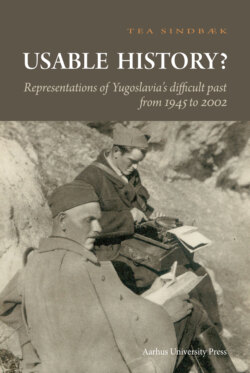Читать книгу Usable History? - Tia Sindbaek - Страница 17
На сайте Литреса книга снята с продажи.
Partisan victory
ОглавлениеIn September 1943 the allies began to support the Partisans as well as the Chetniks. In the same month the Partisan position was significantly improved by the Italian surrender, which left large areas under Partisan control and brought much needed supplies of weapons and ammunition. By late 1943 Partisan popularity had grown enormously. Probably their ranks now consisted of more than 100,000 fighters. On 29th November 1943, in the Bosnian town of Jajce, a second meeting was held of the Anti-Fascist Council for the National Liberation of Yugoslavia (Antifašističko Vijeće Narodnog Oslobodjenja Jugoslavije, known as AVNOJ), which was the wider political wing of the Partisan movement. The 143 delegates from all parts of Yugoslavia formed a provisory government, as opposed to the royal administration in London, and declared that post-war Yugoslavia was to be a federation of six units: Bosnia and Herzegovina, Croatia, Macedonia, Montenegro, Slovenia and Serbia. The king was not to return to Yugoslavia until the country was completely liberated and the people had decided whether to re-establish the monarchy.
From then on the Partisans had the upper hand. In the autumn of 1944 they attacked Serbia from the West and South West, and drove out Mihailović and his forces. At the same time the Soviet Red Army attacked Serbia from North-East, and on 20th October the Partisans, in cooperation with the Red Army, took over Belgrade. The Red Army moved on to Hungary, leaving the Yugoslav Partisans to fight the remaining occupiers and finish their civil war. In the spring of 1945, the Partisans, now called the Yugoslav Army, pursued the former occupying armies and Yugoslav anti-communist forces towards Germany. On the 15th May 1945, the last of these forces were turned back by the allied armies at the Yugoslav-Austrian border and were afterwards either killed by or had to surrender to the Partisans.11 In the following months, the Partisans’ Yugoslav Army eliminated the remaining Chetnik detachments in Bosnia and Serbia. Albanian nationalists and anti-Partisan forces remained powerful in Kosovo, until they were finally crushed in July 1945.
The Communist Party moved swiftly to secure its own hegemonic power in post-war Yugoslavia. A provisional government, controlled by an over- whelming communist majority, was set up, and elections for a constitutional assembly were held in November 1945. The election campaign left hardly any chances to non-communist parties, and the communist controlled Popular Front achieved a comfortable majority. The Communist Party then set out to reconstruct Yugoslavia as a centralised, socialist, federal state.
